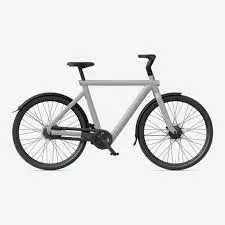
- Afrikaans
- Albanian
- Amharic
- Arabic
- Armenian
- Azerbaijani
- Basque
- Belarusian
- Bengali
- Bosnian
- Bulgarian
- Catalan
- Cebuano
- Corsican
- Croatian
- Czech
- Danish
- Dutch
- English
- Esperanto
- Estonian
- Finnish
- French
- Frisian
- Galician
- Georgian
- German
- Greek
- Gujarati
- Haitian Creole
- hausa
- hawaiian
- Hebrew
- Hindi
- Miao
- Hungarian
- Icelandic
- igbo
- Indonesian
- irish
- Italian
- Japanese
- Javanese
- Kannada
- kazakh
- Khmer
- Rwandese
- Korean
- Kurdish
- Kyrgyz
- Lao
- Latin
- Latvian
- Lithuanian
- Luxembourgish
- Macedonian
- Malgashi
- Malay
- Malayalam
- Maltese
- Maori
- Marathi
- Mongolian
- Myanmar
- Nepali
- Norwegian
- Norwegian
- Occitan
- Pashto
- Persian
- Polish
- Portuguese
- Punjabi
- Romanian
- Russian
- Samoan
- Scottish Gaelic
- Serbian
- Sesotho
- Shona
- Sindhi
- Sinhala
- Slovak
- Slovenian
- Somali
- Spanish
- Sundanese
- Swahili
- Swedish
- Tagalog
- Tajik
- Tamil
- Tatar
- Telugu
- Thai
- Turkish
- Turkmen
- Ukrainian
- Urdu
- Uighur
- Uzbek
- Vietnamese
- Welsh
- Bantu
- Yiddish
- Yoruba
- Zulu
Nov . 20, 2024 20:27 Back to list
how to tune a mountain bike derailleur
How to Tune a Mountain Bike Derailleur
Tuning your mountain bike derailleur is essential for optimal gear shifting performance. A well-adjusted derailleur ensures smooth transitions between gears, making your ride more enjoyable and efficient. Here’s a detailed guide on how to properly tune your mountain bike derailleur.
2. Inspect Your Derailleur Start by giving your derailleur and the entire drivetrain a thorough inspection. Look for any signs of damage, rust, or accumulation of dirt and debris. Clean the components with a degreaser if necessary and ensure the derailleur hanger is straight. A misaligned hanger can lead to poor shifting performance.
3. Check the Cable Tension Cable tension significantly impacts shifting performance. To check this, shift into the largest chainring at the front and the smallest cog at the back. If the chain is slow to shift or doesn’t shift at all, you may need to tighten the cable tension. Use the barrel adjuster on the derailleur or shifter to make small adjustments until the shifting is smooth.
4. Adjust the Limit Screws The derailleur has two limit screws, typically marked as ‘H’ (high) and ‘L’ (low). These screws prevent the chain from overshifting and falling off the gears.
how to tune a mountain bike derailleur

- High Limit (H) This screw controls how far the derailleur moves towards the smallest cog. To adjust, shift to the smallest chainring in the front and the smallest cog in the back. If the chain tries to shift beyond the smallest cog, tighten the H screw until the chain stays in place. - Low Limit (L) This screw controls movement towards the largest cog. Shift to the largest chainring in the front and the largest cog in the back. If the chain attempts to shift beyond the largest cog, tighten the L screw until it stays secure.
5. Align the Derailleur Ensure that the derailleur is properly aligned with the cassette. The rear derailleur should sit parallel to the cogs, not twisted or askew. If it isn’t aligned, loosen the mounting bolt, adjust the position, and re-tighten.
6. Test Shifting Once you’ve made adjustments, take your bike for a test ride. Shift through all the gears, paying attention to any delays or misalignments. If you notice slipping or jumping gears, revisit your cable tension or limit screws.
7. Regular Maintenance Regularly checking and adjusting your derailleur will prolong its lifespan and ensure smooth operation. Consider performing this maintenance every few months or before a big ride.
Conclusion Tuning your mountain bike derailleur may sound daunting, but with a little patience and practice, you can enhance your bike’s performance significantly. By following these steps, you’ll enjoy smoother shifts and a more controlled ride every time you hit the trails. Don't hesitate to consult a professional if you’re unsure about any adjustments or if your bike requires more extensive repairs. Happy riding!
-
The Ultimate Kids' Four-Wheeler Experience
NewsJul.09,2025
-
The Ultimate Guide to Mountain Bikes: Gear Up for Your Ride
NewsJul.09,2025
-
The New Age of Cycling: Electric Bikes for Every Rider
NewsJul.09,2025
-
The Best Kids Bicycles: Ride in Style and Safety
NewsJul.09,2025
-
The Best 3-Wheel Scooters for Kids: Fun, Safety, and Adventure
NewsJul.09,2025
-
Revolutionize Your Ride: Affordable Electric Bikes
NewsJul.09,2025
-
Finding the Perfect Mountain Bike for Every Rider
NewsJul.09,2025



